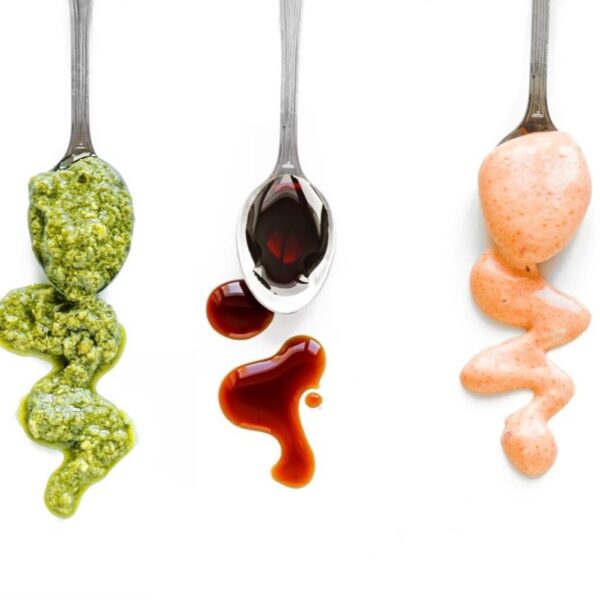Caffeine is a natural stimulant that belongs to a class of compounds called methylxanthines. It has been used for thousands of years and is one of the world’s most widely consumed active food ingredients. Caffeine is found in various plants, including coffee beans, tea leaves, guarana berries, cacao beans, and kola nuts. Caffeine acts as a stimulant for the central nervous system, increasing alertness and reducing fatigue. It is commonly consumed in coffee, tea, energy drinks, and certain medications.
What is Caffeine?
Caffeine (1,3,7-trimethylcanthine or 3,7-dihydro-1,3,7-trimethyl-1H-purine-2,6-dione, or methyltheobromine) is a purine alkaloid, and it is a xanthine derivative. Its chemical formula is C8H10N4O2. The chemical structure of caffeine consists of a purine ring system, which includes nitrogen atoms. Caffeine is a trimethylxanthine, in which the three methyl groups are located at positions 1, 3, and 7.
Source: Wikipedia
How is Caffeine Produced?
Caffeine can be obtained from natural sources or through synthetic production methods.
- Natural sources: The natural sources with the highest amounts of caffeine are guarana (4-7% of dry weight), tea leaves (3.5%), and coffee beans (1.2-2.2%) [1].
- Synthesis through methylation of various xanthines and theophylline: Synthetic caffeine is primarily produced by reacting dimethylurea and malonic acid. It can also be produced by treating theobromine with methyl iodide and sodium methoxide. When uric acid is treated with methyl iodide in an alkaline solution, it produces 1,3,7-trimethyluric acid. When heated further with phosphoryl chloride (POCl3), it produces chlorocaffeine, which forms caffeine on further reduction with hydrogen iodide.
Use of Caffeine in the Food Industry
Caffeine is added to many foods and beverages as a flavoring agent and/or stimulant. Typical uses of caffeine in various food products are described in the table below.
| Product | Use |
| Energy Drinks | Caffeine is a key ingredient in energy drinks, designed to boost energy and increase alertness. |
| Soft Drinks | Many carbonated soft drinks, such as cola, contain caffeine to enhance the flavor and provide a slight stimulant effect. |
| Chocolate | Caffeine is naturally present in cocoa beans, so chocolate products, especially dark chocolate, contain small amounts of caffeine. |
| Ice Cream & Desserts | Some ice cream flavors, such as coffee or mocha, contain caffeine for added flavor. |
| Baked Goods | Caffeine can be added to baked goods like cookies, cakes, and muffins to enhance flavor and provide a subtle energy boost. |
| Protein Bars & Snacks | Caffeine is sometimes added to protein bars and snacks to provide an energy boost for athletes. |
| Medicinal Foods & Beverages | Caffeine is often added to over-the-counter medications, such as pain relievers and cold remedies, to enhance their effectiveness. |
Medicinal Uses
The FDA has approved caffeine for use in the treatment of apnea of prematurity and the prevention and treatment of bronchopulmonary dysplasia of premature infants. Non-FDA-approved uses of caffeine include treating migraine headaches and post-dural puncture headaches and enhancing athletic performance, especially in endurance sports.
Applications in the Food Industry
| Function | Applications |
| Flavoring Agent | Caffeine has a bitter taste, which can enhance the flavor of certain foods and beverages. It is often added to chocolate, soft drinks, and baked goods. |
| Stimulant | Caffeine acts as a central nervous system stimulant, increasing alertness and reducing fatigue. It can help to improve focus and concentration, increase energy levels, and combat drowsiness. It is commonly added to energy drinks and some snacks to provide a quick pick-me-up. |
Properties of Caffeine
| Physical Form | Powder, crystalline powder |
| Color | White |
| Odor | Odorless |
| Taste | Bitter |
| Storage Temperature & Conditions | 2-8°C, ambient conditions in tightly closed container |
| Molecular Weight | 194.19 g/mol |
| pH | Neutral (6.9, 1% solution) |
| Density | 1.23 g/cm3 |
| Melting Point | 235-238°C |
| Refractive Index | 1.6590 |
| Pka | 14 |
| Solubility | 10-50 mg/mL at 73°F |
Typical Caffeine Formulations
Chewing Gum
Here is an example of a chewing gum formulation table that includes caffeine, along with the weight of ingredients:
| Ingredient | Composition (mg) |
| Caffeine | 20 |
| Gum base (Elvazti) | 60 |
| Gum base (487) | 60 |
| Gum base (Stick) | 80 |
| Gum base (Fruit C) | 80 |
| Sugar | 500 |
| Liquid glucose | 20 |
| Glycerin | 20 |
| Aspartame | 2 |
| Cinnamon flavor | 4 |
Using chewing gum as a delivery system for caffeine has several advantages over other systems. It is easy to use since it requires no water, and there is minimal possibility of overdosing as chewing is required to release the active.
Source: Wolters Kluwer
Ready-to-Drink Beverage
Here is an example of a ready-to-drink beverage formulation table that includes caffeine.
| Ingredient | Composition (g/L water) |
| Sodium benzoate | 0.14 |
| Acesulfame K | 0.06 |
| Ciric acid | 3.10 |
| Aspartame | 0.19 |
| Natural blackberry flavor | 0.80 |
| Caffeine | 0.16 |
| Glutamine | 1.00 |
| Ascorbic acid | 0.01 |
Source: Google Patents
Caffeine Formulation Considerations
Stability & Interactions with Other Components in Food
Caffeine is hygroscopic. It is thermally stable up to 200°C. In a study, caffeine decomposed completely at around 285°C, demonstrating its superior thermal stability at temperatures below 200°C. It is incompatible with strong acids, strong bases, strong oxidizing agents, iodine, silver salts, and tannins, and it is weakly light-sensitive in solutions.
Mechanism of Action
Caffeine works by blocking the action of adenosine, a neurotransmitter that promotes sleep and relaxation. Caffeine has a similar molecular structure to adenosine and occupies adenosine receptor sites, primarily A1 and A2a. The blockage of adenosine to the neurons causes the sleep-promoting effects of adenosine to stop, resulting in the neurons speeding up instead of slowing down. Generally, the effects of caffeine can be felt as soon as 15 to 45 minutes after consumption and can last for several hours.
By blocking adenosine receptors in the brain, caffeine indirectly affects the release of other neurotransmitters like norepinephrine, dopamine, acetylcholine, serotonin, glutamate, and gamma-aminobutyric acid. These effects may lead to increased alertness, improved focus, and a temporary boost in energy. Many studies confirm caffeine’s ability to enhance mood and alertness, exercise performance, the speed at which information is processed, awareness, attention, and reaction time.
Natural vs. Synthetic Caffeine
Synthetic caffeine absorbs into the body much faster than natural caffeine, leading to a peak in stimulation much sooner. 8-(3-phenylpropyl)-1,3,7-triethylxanthine (PTX) is a novel adenosine antagonist with higher receptor affinity than natural caffeine. As a result, its metabolic effects could be stronger than those of natural caffeine. Synthetic caffeine is cheaper to produce in mass quantities as natural caffeine is more challenging and more expensive to source.
Dosage Considerations
| Dosage Dependence | The effects of consuming caffeine depend on quantity, the type of product containing the caffeine, and the consumer’s unique characteristics, including age, metabolism, liver function, and tolerance level. Pregnancy can also affect the metabolism and elimination of caffeine from the body. |
| Bioavailability | Caffeine has nearly 100% oral bioavailability and is the primary route of administration. When taken orally, onset typically occurs within 45 to 60 minutes and lasts approximately 3 to 5 hours. Absorption is somewhat delayed when taken with food. |
| Average Consumption | Coffee is the most commonly used source of caffeine. The average caffeine consumption from all sources reaches 76 mg/person/day in the United States. It is approximately 210-238 mg/person/day in Canada and exceeds 400 mg/person/day in Sweden and Finland. |
Absorption, Metabolism, Excretion
| Absorption | Upon ingestion, caffeine is rapidly absorbed into the bloodstream and distributed throughout the body. It can cross the blood-brain barrier, affecting the central nervous system and producing stimulating effects. |
| Metabolism | Caffeine is extensively metabolized by the liver (99%) to form three major metabolites: 3,7-dimethylxanthine, 1,7-dimethylxanthine, and 1,3-dimethylxanthine. Peak plasma concentration is reached within 1.5 hours of consumption. It undergoes demethylation to obtain paraxanthine (84%), theobromine (12%), and theophylline (4%). These metabolites are further broken down in the liver. Each of these metabolites has its own effects on the body, although they are generally less potent than caffeine itself. Linearity is observed in pharmacokinetics up to 100 mg dosage, after which the clearance is significantly reduced. |
| Excretion | The metabolites further undergo oxidation to form urates and are excreted through urine. Around 3% of the caffeine can go unchanged in the urine. |
Safety and Regulatory Considerations
| FDA Information | The U.S. FDA regulates caffeine content in soft drinks but does not regulate caffeine contained in energy drinks. Caffeine is considered “generally regarded as safe” by the FDA and is allowed to be added to cola-type beverages at 0.02%. The FDA aggressively monitors the marketplace for caffeine-containing products and dietary supplements consisting of pure and highly concentrated caffeine.The FDA has issued guidelines for highly concentrated caffeine products. |
| EU Information | The European Food Safety Authority mandates that energy drinks with over 150 parts per million (ppm) or 150 mg per liter caffeine content should be labeled as ones with “high caffeine content,” and the exact amount should be indicated. |
Caffeine Health Effects
In addition to its stimulating effects, caffeine has been associated with various health benefits. It has been shown to enhance cognitive function, improve mood, and increase physical performance. It may also have protective effects against certain diseases, such as Parkinson’s disease, liver disease, and certain types of cancer.
| Obesity Management | Caffeine consumption has been associated with weight reduction. Caffeine has demonstrated a role in increasing metabolic rate, energy expenditure, lipid oxidation, and lipolytic and thermogenic activities. |
| Diabetes Management | Studies have shown an inverse relationship between caffeine consumption and type 2 diabetes. One study highlights the lower risk of type 2 diabetes associated with habitual coffee consumption. |
| Potential Prevention of Cardiovascular Diseases | Regular consumption of coffee has been associated with reduced risk of cardiovascular diseases. However, more studies are required. |
| Effects on Central Nervous System | Experimental evidence supports the use of caffeine and other adenosine receptor antagonists, as well as adenosine receptor agonists, in the reduction of hyperalgesia, excitotoxicity, inflammatory response, dyskinesia, akinesia, sensory and motor deficits, and neuronal cell death related to the pathophysiology of the discussed neurodegenerative diseases. |
| Immunomodulatory Effects | Consumption of coffee has positive effects on the immune system. The immunomodulatory actions of caffeine are mediated via the inhibition of cyclic adenosine monophosphate (cAMP)–phosphodiesterase (PDE) and a consequential increase in intracellular cAMP concentrations. Caffeine also modulates the different subpopulations of macrophages in various ways. In high concentrations (5 mM), caffeine inhibits the mammalian target of rapamycin (mTOR) and affects glycolysis and the release of pro-inflammatory cytokines. In monocytes, caffeine also inhibits xanthine oxidase (purine catabolism) and intercellular cAMP levels in basophiles. |
| Anti-inflammatory Effects | Caffeine shows anti-inflammatory effects in the body. These effects are thought to be a primary reason why research has linked regular coffee consumption with lower risks for many inflammatory-related conditions, including Alzheimer’s, Parkinson’s, type 2 diabetes, gout, heart disease, and some cancers. |
| Antioxidant Effect | Natural sources of caffeine often combine plant polyphenols (phenol-carboxylic acids, catechins) with known antioxidant effects. |
| Hepatoprotective Activity | Caffeine may play a potential role in the stimulation of β-oxidation in hepatic cells, intrahepatic lipid content reduction, and hepatic autophagy. Caffeine ingestion suppresses inflammation and lipogenesis, reduces lipid peroxidation, and is linked with a lower risk for nonalcoholic fatty liver disease. |
Caffeine Safety & Toxicity
Caffeine has a long history of safe use, and overwhelming scientific evidence maintains that caffeine has no adverse health effects when consumed in moderation. However, the following should be considered.
- Possible Side Effects: People with hypertension, children, adolescents, and older people may be more susceptible to the adverse effects of caffeine consumption, particularly overconsumption. Research has shown links between heavy caffeine consumption and osteoporosis, high blood pressure, heart disease, heartburn, ulcers, severe insomnia, and infertility. Caffeine has diuretic properties when administered in sufficient doses to subjects who do not have a tolerance for it. Anxiety and depression are associated with heavy caffeine use. Common symptoms of caffeine intoxication include nervousness, anxiety, restlessness, insomnia, gastrointestinal upset, tremors, tachycardia, and psychomotor agitation.
- Addiction: It is important to note that caffeine is a mildly addictive substance. Consuming caffeine in moderation and being mindful of individual tolerance and sensitivity is recommended. Caffeine use becomes “abusive” when an uncontrolled urge to consume caffeine arises, even if it is detrimental to health. Caffeine use becomes “dependent” when tolerance and abstinence mechanisms occur, and there are some habits of chronic use that render caffeine even more harmful.
Identification Numbers
| IUPAC Name | 1,3,7-trimethylpurine-2,6-dione |
| CAS Number | 58-08-2 |
| EC Number | 200-362-1 |
| FEMA Number | 2224 |
Acceptable Limits or Maximum Usage
As caffeine is not an essential component of a normal diet, there are no Recommended Dietary Intakes. There are currently no recognized health standards for intake, such as Acceptable Daily Intake (ADI) or a safety limit established for caffeine exposure. According to a study, single doses of caffeine up to 200mg — about 3mg per kilogram of body weight (mg/kg bw) from all sources — do not raise safety concerns for the general healthy adult population.
Fun Facts About Caffeine
- The German chemist Friedrich Ferdinand Runge first isolated the caffeine molecule in 1819. It is also known as coffeine, theine, mateine, guaranine, or methyltheobromine.
- Coffee is the most commonly consumed source of caffeine. The two main types of coffee plants are Arabica and Robusta. Arabica beans generally have less caffeine than Robusta beans.
Additional Resources
- IFT Journal – Journal of Food Science on Functional Foods
- PubMed Central – Article on Functional Food Ingredients
- EFSA – News on Functional Foods
- PubMed Central – Article on Functional Foods and Chronic Diseases
- Longdom – Review on Health Benefits and Risks of Coffee Consumption
- British Journal of Oral and Maxillofacial Surgery – Full Text Article
- Springer Link – Book Chapter on Functional Foods
- MDPI – Article in Pharmaceuticals on Functional Foods
- PubMed – Book on Dietary Supplements and Health









